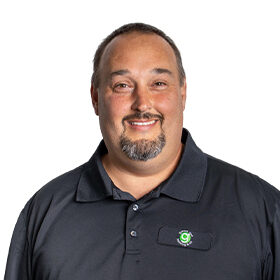If you live in Wilmington, NC, you know that hurricane season is a real part of life on the coast and something that you should prepare for each year. With tropical storms and hurricanes regularly hitting the area between June and November, protecting your home means more than just boarding up windows. Your HVAC system is one of your home’s most critical investments, and it is especially vulnerable during hurricane season. This blog will guide you through the steps that you need to take to protect your system from storm damage and ensure safe operation after the storm passes.
Why Your HVAC System Is at Risk During Hurricane Season
Your HVAC sits outside and is openly exposed to everything a storm can throw at it. High winds, flying debris, torrential rain, power surges, and even flooding can all cause serious damage to the unit. Wilmington’s coastal location makes these threats even more pronounced. Let’s explore what each threat can do to your HVAC equipment.
High winds can topple or shift your outdoor condenser unit. Debris picked up in the wind can strike and dent coils, damage the fan, or break wiring. Heavy rains and storm surges can submerge your HVAC unit. This can lead to electrical failures, corrosion of the unit, or even the need for a total system replacement. When the power goes out and comes back suddenly, it can cause damaging voltage spikes that fry components within your HVAC. Even if a storm misses the Wilmington area directly, the salty coastal air and high humidity that occurs during a hurricane can speed up rust and wear on your outside components.
Steps to Prepare Your HVAC for a Hurricane
You can’t stop a storm, but you can prepare your HVAC to ride it out with minimal damage. Let’s explore some steps that you should take before a hurricane comes to your area.
Schedule an Inspection Before the Storm
Contact us at Green Dot Heating & Air to have one of our licensed HVAC technicians perform a system checkup before hurricane season. We can tighten electrical connections, inspect refrigerant lines, and make sure your unit is operating safely. If your unit is older or already showing wear, we can address it before the rain and inclement weather prevent us from doing so in a timely manner.
Secure and Cover the Outdoor Unit
Trim back shrubs and branches near your HVAC setup to prevent blockage. Remove loose items from your yard, like garden tools, furniture, or planters, that could become dangerous projectiles. Fasten your outdoor condenser with hurricane straps or an anchor to prevent it from shifting when high winds come to the area. Use a waterproof cover to protect your outside unit from falling debris. Make sure it is tightly secured so that it does not blow away. Don’t forget to remove the cover after the storm to prevent moisture buildup.
Turn Off Your System During the Storm
Turn off your HVAC at the thermostat and the circuit breaker right before the storm hits. This reduces the risk of electrical damage from power surges caused by water exposure.
Install a Surge Protector
Contact us about installing a dedicated surge protector for your HVAC. It can block damaging power spikes and save you from expensive repairs.
What to Do After the Storm Passes
Once the skies clear, you may want to turn your system back on so that you can maintain your desired temperature in your home. Before doing that, though, there are a few things you should do first.
Inspect the Unit
Inspect your cooling system for any signs of damage before restarting it. This includes disconnected wiring, dents in the fins, and debris that is inside or around the unit. If anything feels off, don’t turn it on without help. Our team is able to assess the damage and recommend safe repairs or replacements that your system needs.
Wait for Power to Stabilize
After a significant outage, power can be unstable. Wait until the utility company confirms that electricity is steady in your area before turning your system back on.
Schedule an After-Storm Maintenance Session
Even if everything appears to be in order, it’s advisable to have one of our technicians inspect the system before using it. Hidden moisture damage or electrical issues may not be visible, but they can cause serious problems down the line. If floodwaters or physical impact damage your unit, avoid attempting to repair it on your own. These systems involve high-voltage components and complex refrigerant systems.
Smart Upgrades for Hurricane Resilience
Installing upgrades helps protect your system while reducing downtime after a storm. Here are some upgrades that might be of interest to you.
A Smart Thermostat
Installing a smart thermostat gives you additional control over your cooling system during hurricane season. These devices allow you to change the temperature in your home remotely. It even provides an option to shut the system down if needed, which can be especially helpful in the event of an evacuation. Some models can also send alerts about humidity levels or unusual temperature changes, keeping you informed about your HVAC when you’re away from home.
Surge Protection
Power surges during a storm can damage or even fry your HVAC components in seconds. With whole-home surge protector installation, it offers your system protection from these voltage spikes. This small investment helps protect expensive parts, reducing the chance of needing major repairs or a complete replacement after a storm.
An Elevated Condenser Platform
In flood-prone areas of Wilmington, raising your outdoor HVAC condenser is a smart and preventive measure to take. By elevating the unit above flood levels, you reduce the risk of water damage to the unit. This upgrade aligns with FEMA recommendations and may help you meet local building codes.
Hurricane-Rated HVAC Covers
A hurricane-rated HVAC cover provides an additional layer of protection against flying debris and hail during high winds. Unlike most cover options, these will protect your outdoor unit by allowing air to circulate while keeping debris from causing damage. They also help prevent moisture from getting trapped, which can eventually lead to rust and mold growth.
Whole-Home Dehumidifiers
Excess humidity inside your home can promote mildew and mold growth. Installing a whole-home dehumidifier helps minimize moisture levels in your home, which helps your system be more efficient when it is under stress. This will improve air quality as well as protect your walls and floors from water damage.
Contact Trusted Local HVAC Experts
Preparing your system for hurricane season is about ensuring safety, achieving cost savings, and maintaining peace of mind. In this area, you face unique challenges from coastal weather, and no one understands that better than locals, like us at Green Dot Heating & Air, who work in these conditions year-round. Be sure to ask about our maintenance program!
With over two decades of experience, our team will make sure your HVAC system weathers the storm. Contact us today to schedule your hurricane-season HVAC checkup! We offer repairs and AC maintenance, among other services.









